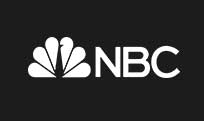
Cash Column: Altering Your Pricing for More Profit
Behavioral economics and the study of psychology of retail shoppers is fascinating.
What a person will pay is all based on their perception of the value of the item. Adding a couple of dollars here and there does not change the customer’s perception of the value. For example, an item that is $8 can be sold for $10. Now look at an item that is $11. It should just be $12. Literally LOOK at the price. It looks better, doesn’t it? And you would still buy it… right?
Adding that dollar or two has a HUGE impact on your profit.
It is imperative to strive for a minimum of a 55% initial markup (IMU) for most stores. The easiest way to get that is to look at your inventory and see where you can use the pricing guidelines below. You will find it easier than you think. For a store doing $500,000, increasing your IMU from 50% to 55% can give you an additional $25,000. That caught your attention, didn’t it?
|
ORIGINAL PRICE |
PROFIT PRICING |
NOTES |
|
0 – $3.00 |
Use only the .50 or the .00 |
Don’t bother with the .25 or .75 – in most situations, it won’t make a difference. |
|
$4.00 – $5.00 |
$5.00 |
A customer considers a $4 item to really be a $5 item anyway. |
|
$6.00 – $8.00 |
$8.00 |
Use only when you have to – think hard and consider if the value of the item is really $10. |
|
$9.00 – $10.00 |
$10.00 |
In their heads, a customer considers it a $10 item anyway. |
|
$11.00 – $12.00 |
$12.00 |
An $11.00 looks like it should have been $10. |
|
$13.00 – $15.00 |
$15.00 |
People like to think in 5’s. If it is $13 or $14, it might as well be $15. |
|
$18.00 – $20.00 |
$20.00 |
As the prices get higher, I find that the extra dollar or two or three won’t stop a customer from buying it. |
|
$21.00 – $22.00 |
$22.00 |
Keep the extra few dollars for yourself. |
|
$23.00 – $25.00 |
$25.00 |
No discernible difference from the customers. |
|
Above $25.00 |
Increase by $5 up to $100 |
Remember, it’s about perception vs. actual price / cost of goods. |
|
Above $100 |
You can primarily increase by $25.00 |
Try it. Really look at an item. No one will buy an item at $140 that they wouldn’t buy at $150. |
Ask yourself, “Does increasing the price of certain items in your store help your business? Does it hurt your business?”.
Understanding how IMU can help your store can help you in your pricing as well as your buying. Consider how this will effect your business and start incorporating the strategy today as a test. Soon enough, this little test will likely become your normal strategy – all thanks to making more money.
Cathy Donovan Wagner, The Retail Maven, is the founder of RETAILMavens and works with specialty, independent store owners to help them explode their profit, get better results, have more fun and get better sleep. She offers private consulting as well as group programs such as www.retailprofitacademy.com. Cathy is also a Retail Minded Advisor and contributes regularly to RetailMinded.com. You can contact Cathy directly at cathy@retailmavens.com.















Nancy
Nicole, I just came across this article you posted about a year ago. I’m curious as to whether you know if most retail stores (independent, small boutiques) include the cost of freight into the cost of the product when establishing their retail price or if they are marking up based on cost of product by itself?
With freight averaging 9-15%, here’s the difference in “cost” in one real (and recent) example I can give: A set of 4 drinking glasses costs me $26.00, but the freight is 15.71% so the set of 4 glasses actually has a “landed” cost of $30.08.
Therefore, if IMU is only based on the product cost, that would equate to a retail of $57.78 to get 55% GM. But if it’s based on product cost PLUS freight, that would equate to a retail of $66.84 to get 55% GM.
As you can see, that’s quite a difference in the selling price, so that’s why I was seeking clarification as to whether your recommendation for a 55% IMU was with or without the freight factored in.
Thanks!
Nancy-